Abstract
1. Monosynaptic (MSR) and polysynaptic (PSR) segmental reflex responses were recorded from a ventral root of the neonate rat hemisected spinal cord. Amplitudes of the two components were monitored with a peak height detector. 2. 5-Hydroxytryptamine (5-HT) depressed the MSR and PSR in a concentration-dependent manner. The IC50 for MSR depression was 9.5 +/- 3.2 microM and for PSR depression was 9.0 +/- 4.8 microM. 3. Blockade of neuronal uptake of 5-HT by citalopram (0.1 microM) greatly increased sensitivity to 5-HT. In the presence of citalopram, the IC50 for MSR depression was 30 +/- 18 nM and for PSR depression was 89 +/- 23 nM. 4. 5-HT did not depress the MSR or the PSR by releasing glycine since strychnine (1 microM) did not prevent these actions of 5-HT. 5. 5-Carboxamidotryptamine (5-CT), 8-hydroxy-2-(di-n-propylamino)tetralin (8-OH-DPAT), RU 24969, 1-[3-(trifluoromethyl)phenyl]-piperazine (TFMPP) and methysergide were full agonists for depression of the MSR. The IC50 for 5-CT was 3.6 +/- 0.5 nM, for 8-OH-DPAT was 0.4 +/- 0.04 microM, for TFMPP was 0.93 +/- 0.3 microM and for methysergide was 21.8 +/- 3.0 nM. The order of potency was 5-CT greater than methysergide greater than 5-HT greater than 8-OH-DPAT greater than TFMPP. 6. 8-OH-DPAT, RU 24969, TFMPP and methysergide had either no or only a minor action in reducing the PSR. 5-CT caused a 50% depression at the highest concentration tested (30 nM).(ABSTRACT TRUNCATED AT 250 WORDS)
Full text
PDF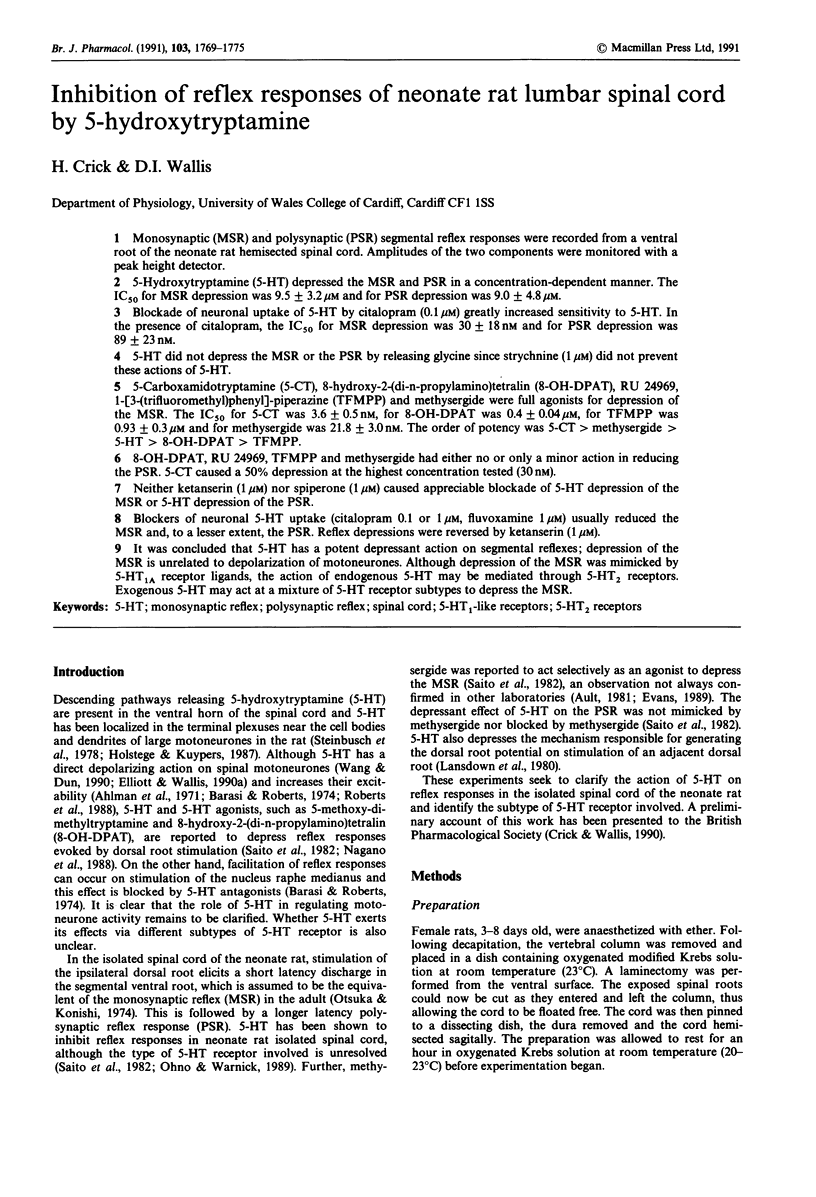
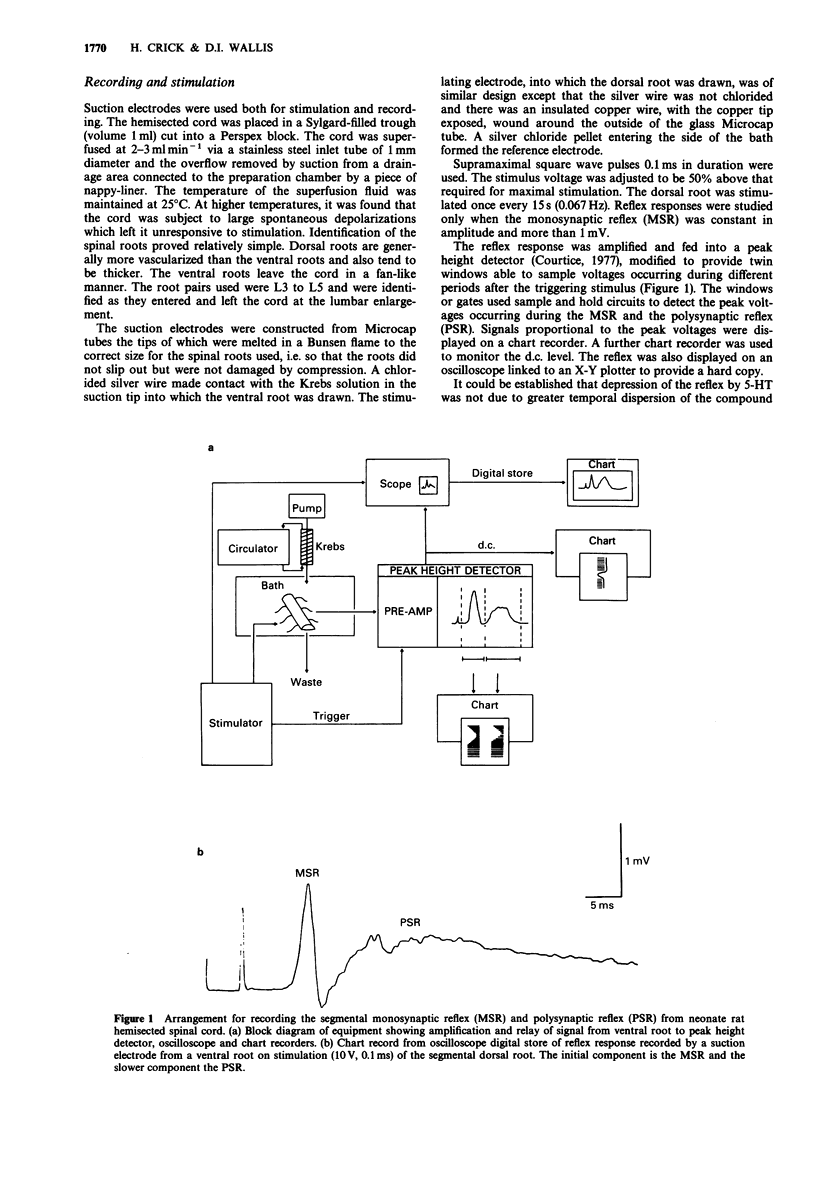
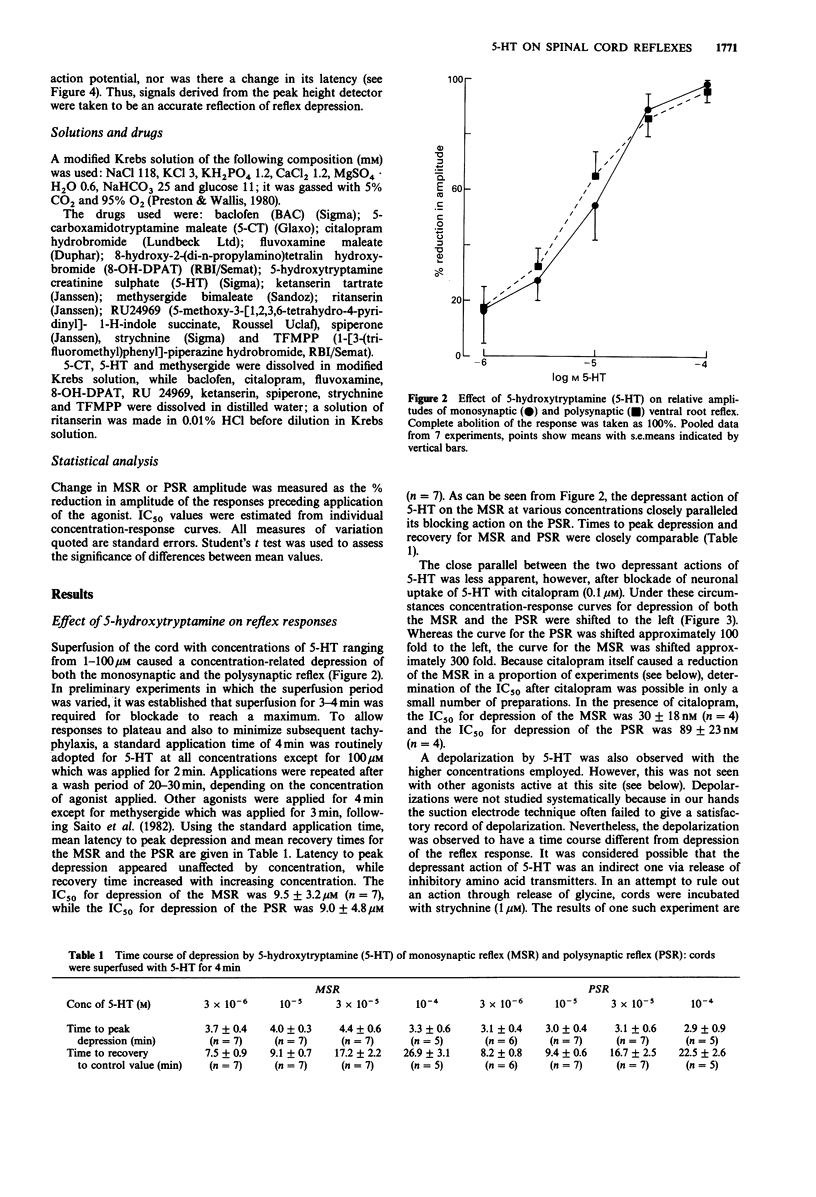
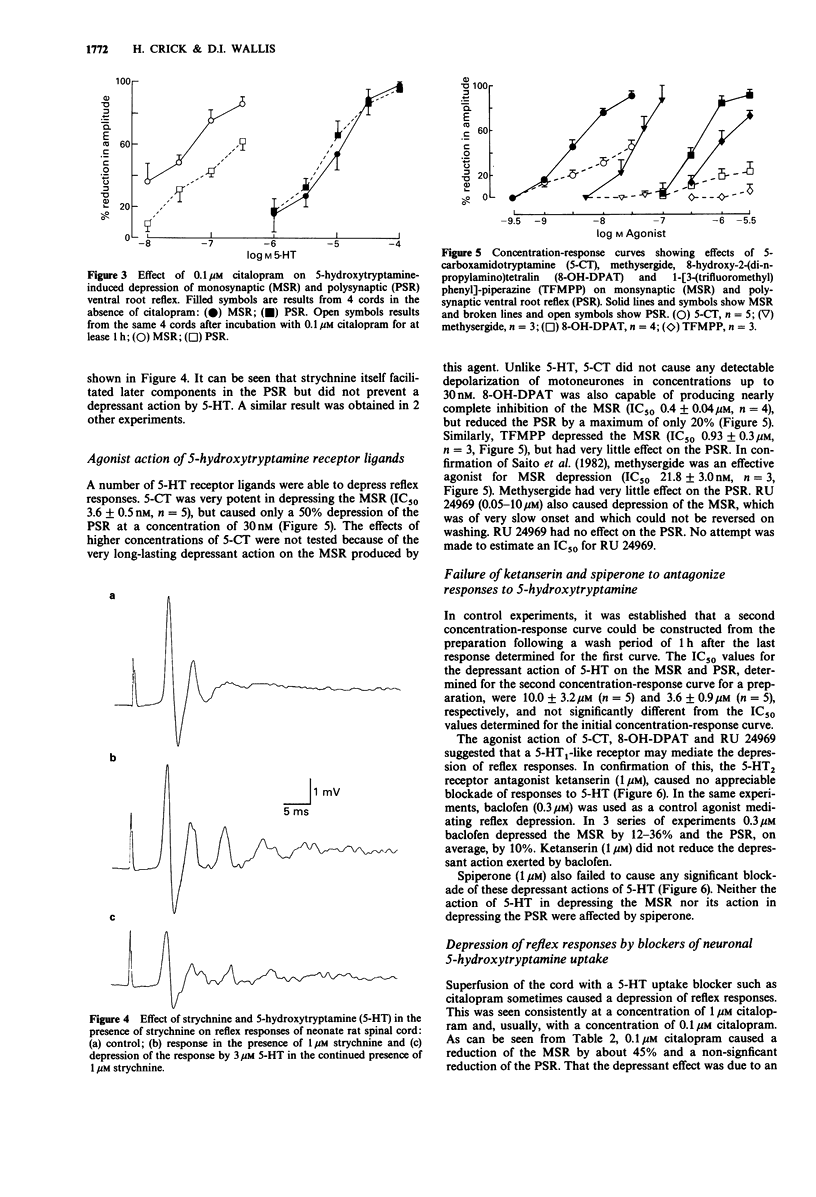
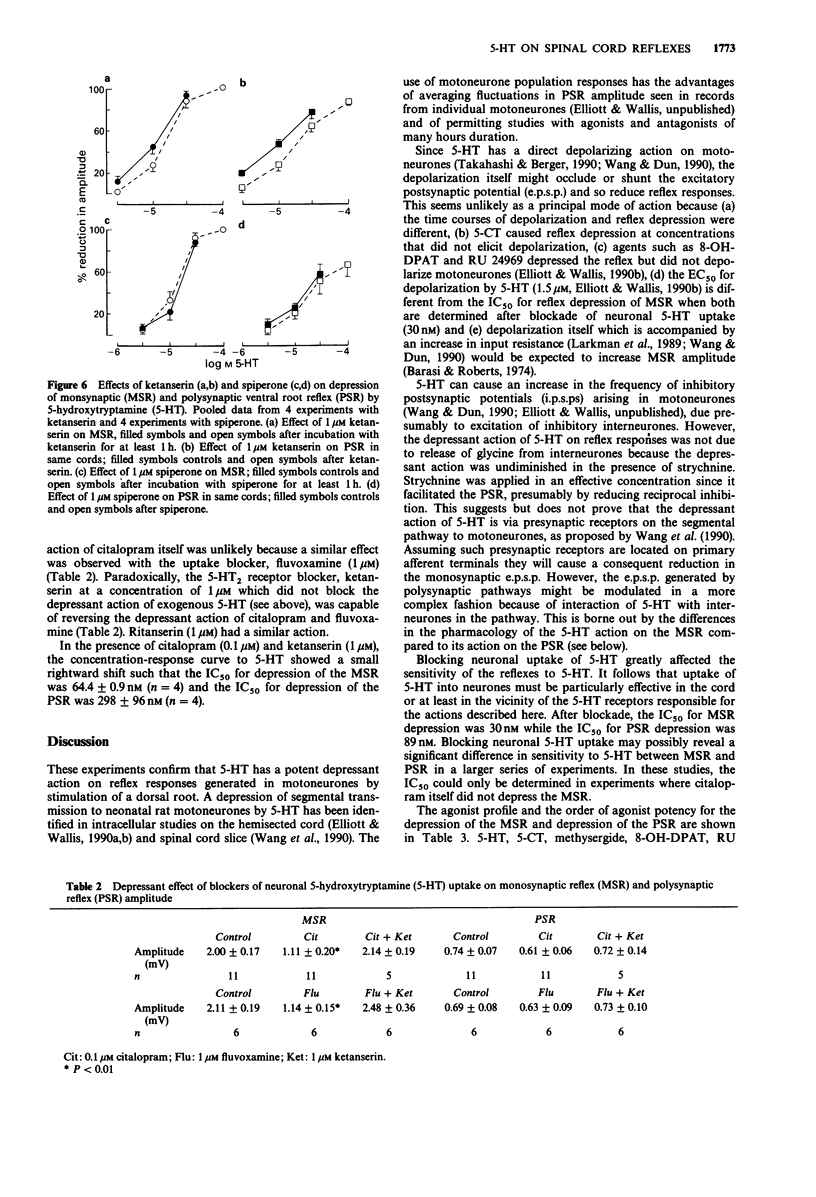
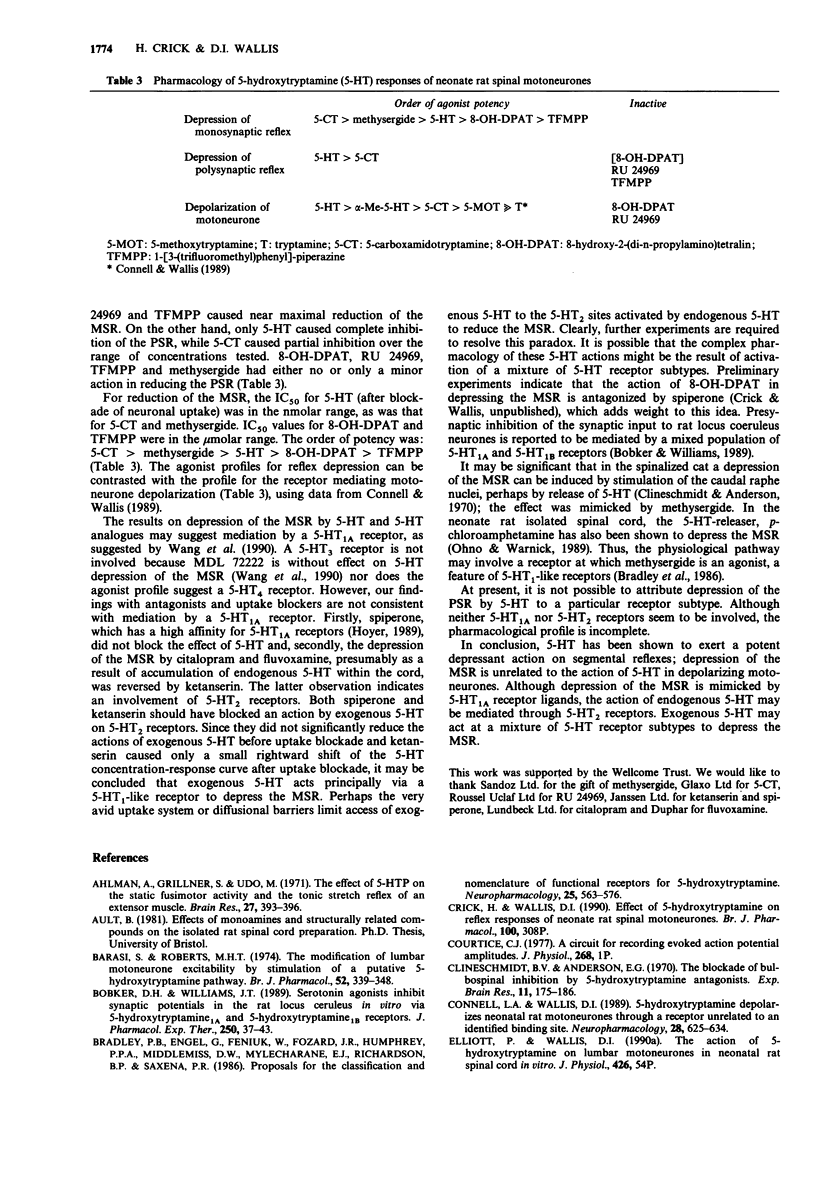
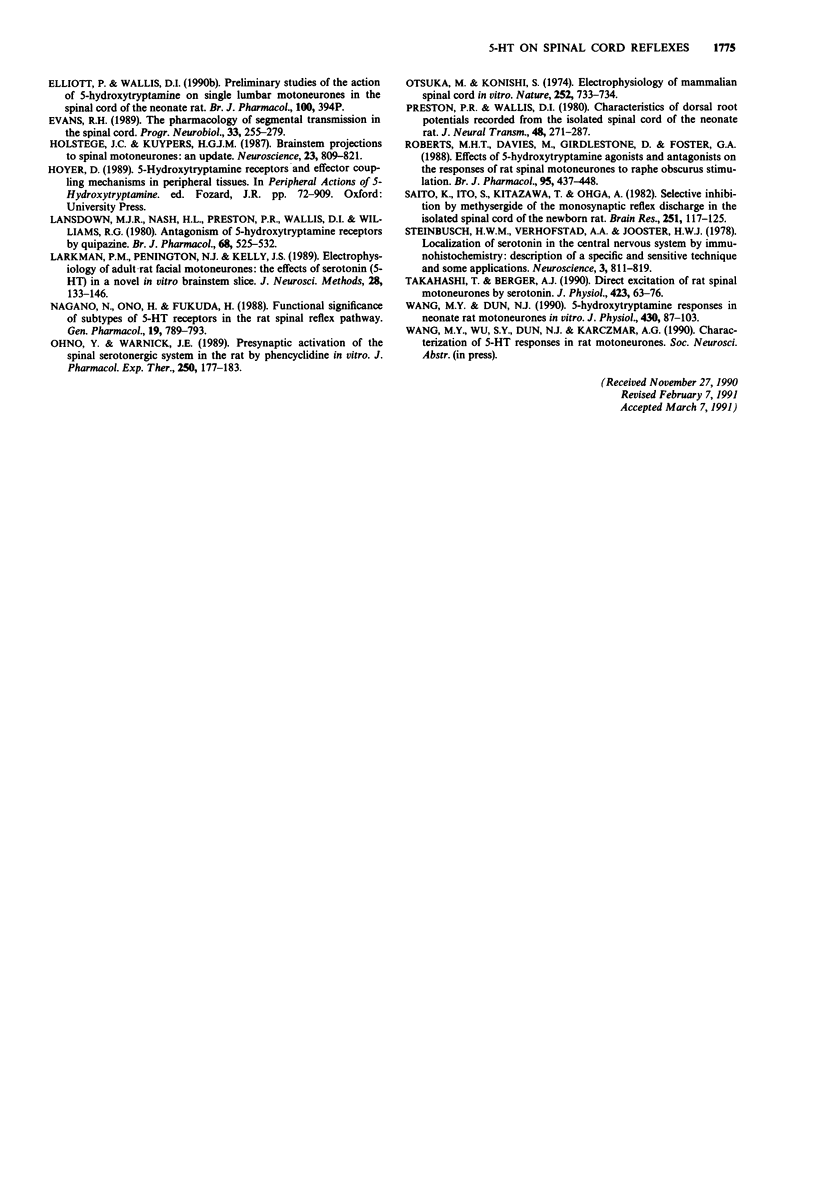
Selected References
These references are in PubMed. This may not be the complete list of references from this article.
- Ahlman H., Grillner S., Udo M. The effect of 5-HTP on the static fusimotor activity and the tonic stretch reflex of an extensor muscle. Brain Res. 1971 Apr 2;27(2):393–396. doi: 10.1016/0006-8993(71)90269-1. [DOI] [PubMed] [Google Scholar]
- Barasi S., Roberts M. H. The modification of lumbar motoneurone excitability by stimulation of a putative 5-hydroxytryptamine pathway. Br J Pharmacol. 1974 Nov;52(3):339–348. doi: 10.1111/j.1476-5381.1974.tb08601.x. [DOI] [PMC free article] [PubMed] [Google Scholar]
- Bertulis A., Guld C., Lennox-Buchthal M. A. Spectral and orientation specificity of single cells in foveal striate cortex of the vervet monkey, Cercopithecus aethiops. J Physiol. 1977 Jun;268(1):1–20. doi: 10.1113/jphysiol.1977.sp011843. [DOI] [PMC free article] [PubMed] [Google Scholar]
- Bobker D. H., Williams J. T. Serotonin agonists inhibit synaptic potentials in the rat locus ceruleus in vitro via 5-hydroxytryptamine1A and 5-hydroxytryptamine1B receptors. J Pharmacol Exp Ther. 1989 Jul;250(1):37–43. [PubMed] [Google Scholar]
- Bradley P. B., Engel G., Feniuk W., Fozard J. R., Humphrey P. P., Middlemiss D. N., Mylecharane E. J., Richardson B. P., Saxena P. R. Proposals for the classification and nomenclature of functional receptors for 5-hydroxytryptamine. Neuropharmacology. 1986 Jun;25(6):563–576. doi: 10.1016/0028-3908(86)90207-8. [DOI] [PubMed] [Google Scholar]
- Clineschmidt B. V., Anderson E. G. The blockade of bulbospinal inhibition by 5-hydroxytryptamine antagonists. Exp Brain Res. 1970;11(2):175–186. doi: 10.1007/BF00234321. [DOI] [PubMed] [Google Scholar]
- Connell L. A., Wallis D. I. 5-Hydroxytryptamine depolarizes neonatal rat motorneurones through a receptor unrelated to an identified binding site. Neuropharmacology. 1989 Jun;28(6):625–634. doi: 10.1016/0028-3908(89)90142-1. [DOI] [PubMed] [Google Scholar]
- Evans R. H. The pharmacology of segmental transmission in the spinal cord. Prog Neurobiol. 1989;33(4):255–279. doi: 10.1016/0301-0082(89)90003-8. [DOI] [PubMed] [Google Scholar]
- Holstege J. C., Kuypers H. G. Brainstem projections to spinal motoneurons: an update. Neuroscience. 1987 Dec;23(3):809–821. doi: 10.1016/0306-4522(87)90160-6. [DOI] [PubMed] [Google Scholar]
- Lansdown M. J., Nash H. L., Preston P. R., Wallis D. I., Williams R. G. Antagonism of 5-hydroxytryptamine receptors by quipazine. Br J Pharmacol. 1980 Mar;68(3):525–532. doi: 10.1111/j.1476-5381.1980.tb14568.x. [DOI] [PMC free article] [PubMed] [Google Scholar]
- Larkman P. M., Penington N. J., Kelly J. S. Electrophysiology of adult rat facial motoneurones: the effects of serotonin (5-HT) in a novel in vitro brainstem slice. J Neurosci Methods. 1989 May;28(1-2):133–146. doi: 10.1016/0165-0270(89)90018-6. [DOI] [PubMed] [Google Scholar]
- Nagano N., Ono H., Fukuda H. Functional significance of subtypes of 5-HT receptors in the rat spinal reflex pathway. Gen Pharmacol. 1988;19(6):789–793. [PubMed] [Google Scholar]
- Ohno Y., Warnick J. E. Presynaptic activation of the spinal serotonergic system in the rat by phencyclidine in vitro. J Pharmacol Exp Ther. 1989 Jul;250(1):177–183. [PubMed] [Google Scholar]
- Otsuka M., Konishi S. Electrophysiology of mammalian spinal cord in vitro. Nature. 1974 Dec 20;252(5485):733–734. doi: 10.1038/252733a0. [DOI] [PubMed] [Google Scholar]
- Preston P. R., Wallis D. I. Characteristics of dorsal root potentials recorded from the isolated spinal cord of the neonate rat. J Neural Transm. 1980;48(4):271–287. doi: 10.1007/BF01250662. [DOI] [PubMed] [Google Scholar]
- Roberts M. H., Davies M., Girdlestone D., Foster G. A. Effects of 5-hydroxytryptamine agonists and antagonists on the responses of rat spinal motoneurones to raphe obscurus stimulation. Br J Pharmacol. 1988 Oct;95(2):437–448. doi: 10.1111/j.1476-5381.1988.tb11664.x. [DOI] [PMC free article] [PubMed] [Google Scholar]
- Saito K., Ito S., Kitazawa T., Ohga A. Selective inhibition by methysergide of the monosynaptic reflex discharge in the isolated spinal cord of the newborn rat. Brain Res. 1982 Nov 11;251(1):117–125. doi: 10.1016/0006-8993(82)91279-3. [DOI] [PubMed] [Google Scholar]
- Steinbusch H. W., Verhofstad A. A., Joosten H. W. Localization of serotonin in the central nervous system by immunohistochemistry: description of a specific and sensitive technique and some applications. Neuroscience. 1978;3(9):811–819. doi: 10.1016/0306-4522(78)90033-7. [DOI] [PubMed] [Google Scholar]
- Takahashi T., Berger A. J. Direct excitation of rat spinal motoneurones by serotonin. J Physiol. 1990 Apr;423:63–76. doi: 10.1113/jphysiol.1990.sp018011. [DOI] [PMC free article] [PubMed] [Google Scholar]
- Wang M. Y., Dun N. J. 5-Hydroxytryptamine responses in neonate rat motoneurones in vitro. J Physiol. 1990 Nov;430:87–103. doi: 10.1113/jphysiol.1990.sp018283. [DOI] [PMC free article] [PubMed] [Google Scholar]


